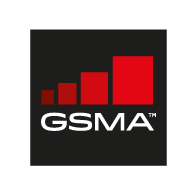Microwave Towards 2020 (Ericsson white paper)
October 12, 2015 – [924.9 KB]
DELIVERING HIGH-CAPACITY AND COST-EFFICIENT BACKHAUL FOR BROADBAND NETWORKS TODAY AND IN THE FUTURE
Network demands and maturity vary around the world, and differences can even be seen within individual countries. Regardless of the situation, operators want to achieve the same goal – to provide the best possible performance and quality of experience in the most cost-efficient way.
Microwave networks are a vital ingredient for operators to meet this goal, and will continue to be the dominant backhaul technology in the future. Rising capacity needs have led to the belief that fiber is a requirement, but in reality microwave backhaul technology is already able to handle 100 percent of all radio access sites’ capacity needs. It will continue to do so in the future, and it will evolve to support multi-gigabit capacities in traditional frequency bands and beyond 10 gigabits in the millimeter wave.
In supporting microwave to meet the capacity increase for backhaul as well as fronthaul, E-band (70/80 GHz) spectrum is the key. It will experience major growth and represent up to 20 percent of new deployments in 2020, with traditional bands still accounting for 70 percent.
A paradigm shift in microwave planning when introducing multiband use is anticipated. A sevenfold capacity increase can be achieved using a wide low-availability link in E-band to boost a high-availability link in traditional bands. Capacity needs will continue to increase on the road to 5G, and keeping up requires a continued technology evolution and re-imagining of network efficiency.
CONTENTS
Executive Summary
Capacity Requirements and Situation
Microwave and Fiber Backhaul
Microwave Backhaul Spectrum
Microwave Beyond Mobile Operators
Unleash the Millimeter Wave Potential
Network Node Benefits
Wireless Fronthaul
Published September 2015
© Ericsson AB 2015
This document is made available here on the GSA website with the permission of the author.
Ericsson is a member organisation of GSA.
